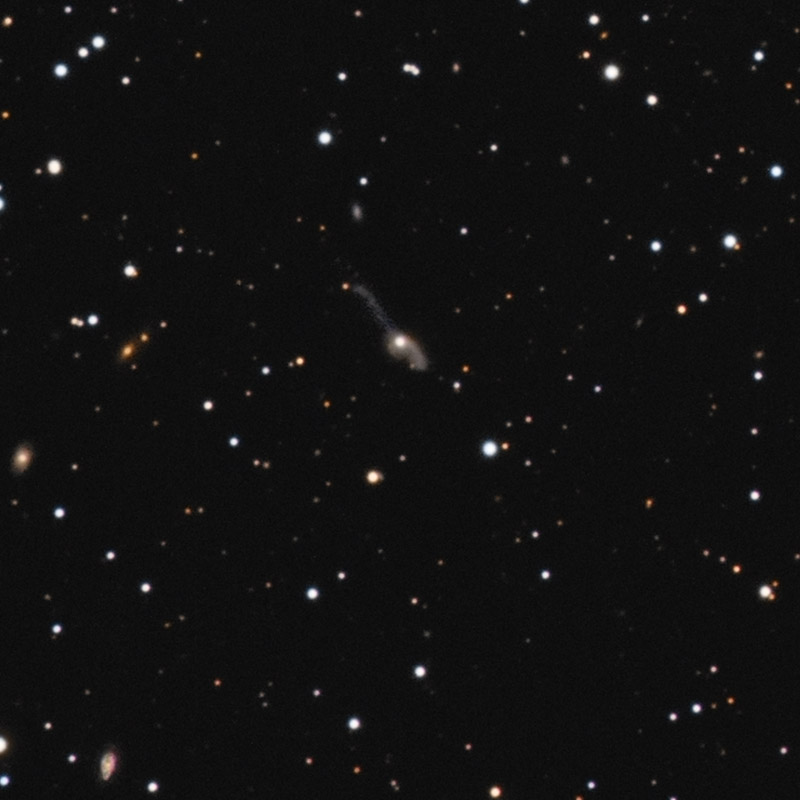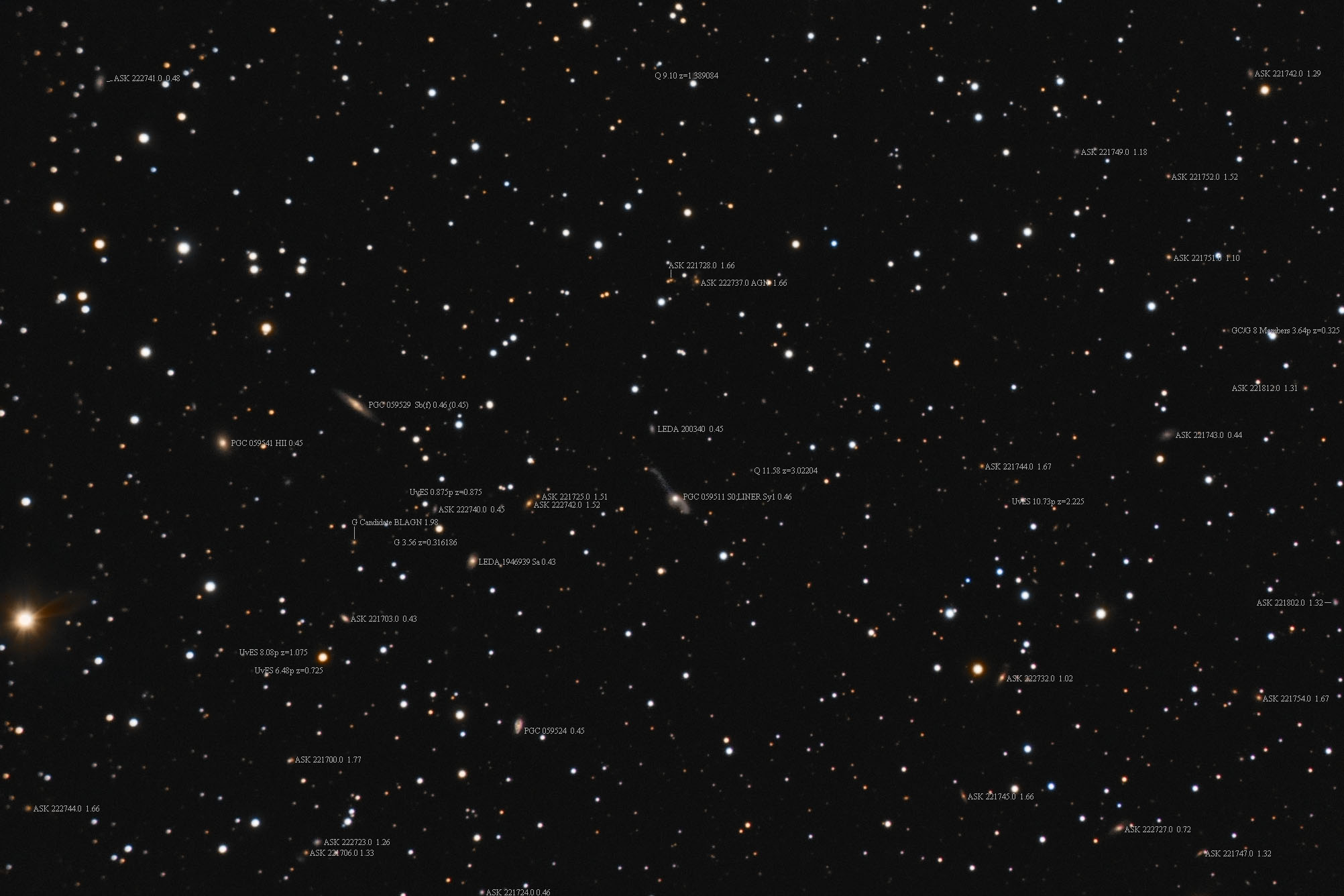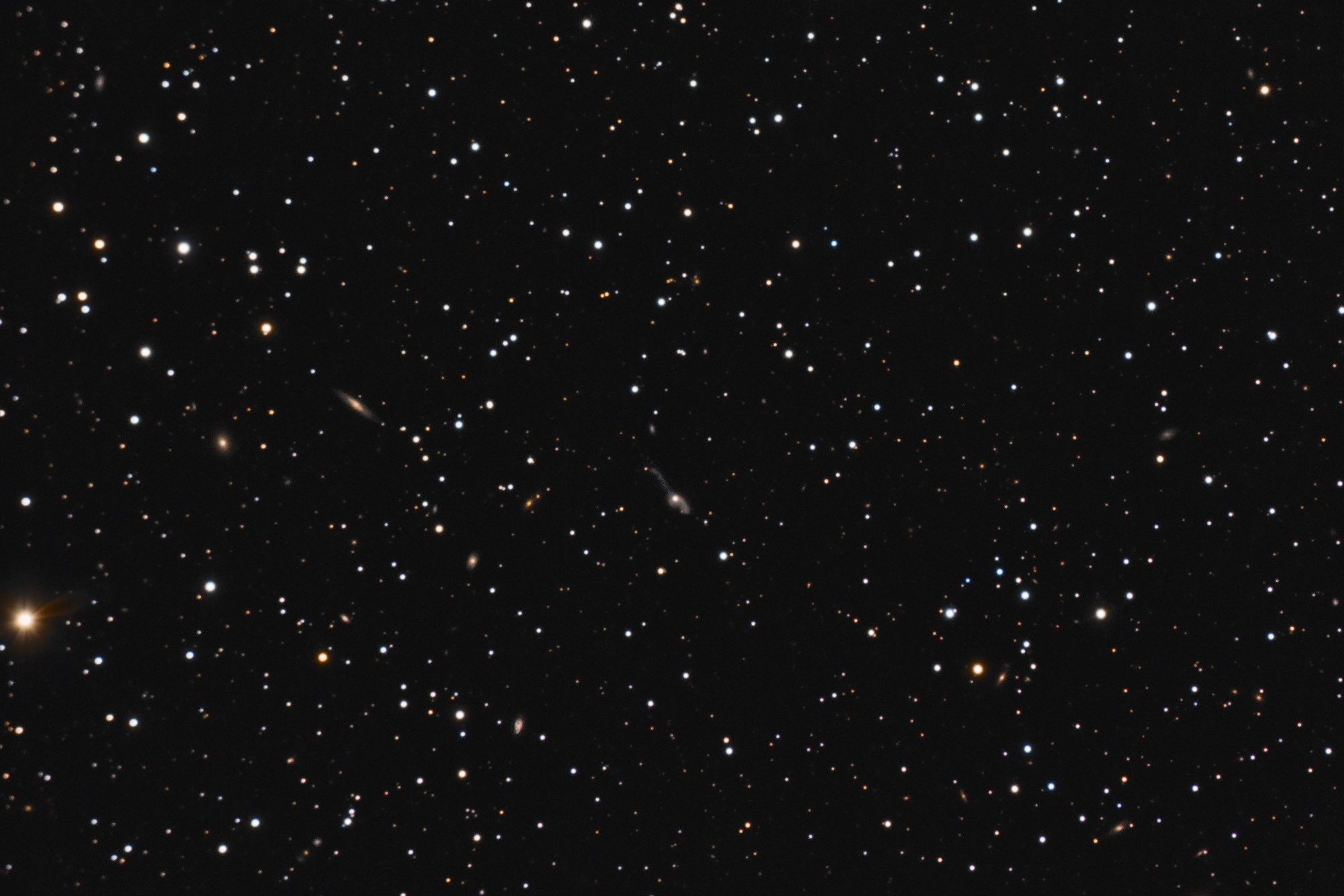| Description | Images |
Object name: UGC10675Designation(s): UGC10675, PGC059511, LEDA200340, UGC 10675 is a double galaxy in Hercules about 0.8 degrees northeast of Epsilon Herculis. At least it is listed in the UGC as a double galaxy. This misled me. It turns out the two galaxies the UGC refers to are nearly 2 minutes apart. The northern one is LEDA 200340 while the southern one is PGC 059511. Since PGC 059511 is a double galaxy itself due to a recent merger I thought that is what UGC 10675 referred to. This caused me to put it lower in the field than I expected. In any case, my target was PGC 059511. One paper describes it as; " Asymmetric spiral, with photometric parameters proper for an S0 type and presents a prominent tail pointing to the SW and a faint residual interacting feature at the opposite direction." The Sloan image shows a bright core with a faint elongated one to the northeast. I'd hoped to pick that up but seeing was poor. The Sloan image is at http://skyservice.pha.jhu.edu/DR9/ImgCutout/getjpeg.aspx?ra=255.8155992&dec=31.4580668&scale=0.1980635&width=800&height=800&opt=&query= . Also, due to clouds preventing me from being at the top of my game I forgot to turn on temperature compensation making things even worse. Still, I was able to pick up the "faint residual interacting feature", the northeast plume that is, fairly well. Transparency wasn't all that great this night either so I was surprised it came out as well as it did after I heavily enhanced the entire galaxy, not just the northeast plume. Comparing my enhanced version to the Sloan image it looks to me that I didn't add any false features. Related Designation(s):2MASS J17031571+3127286, 2MASX J17031573+3127289, 2MASXi J1703157+312729, AKARI J1703155+312730, ASK 221723.0, CGCG 169-035, CGCG 1701.4+3131, FIRST J170315.7+312728, IRAS 17013+3131, IRAS F17013+3131, KUG 1701+315, LEDA 200340, LEDA200340, LQAC 255+031 010, MCG +05-40-034, MRK 0700, NSA 039017, NSA 147663, NVSS J170315+312728, PGC 059511, PGC059511, SDSS J170315.71+312728.5, SDSS J170318.29+312913.4, SDSS J170318.29+312913.7, SDSS J170318.29+312913.8, SDSS J170318.30+312913.8, UCM 1701+3131, UGC 10675, UGC 10675 NED01, UGC 10675 NED02, UGC10675, UZC J170315.7+312729, VV 805, [dML87] 702, [MGD2014] 1701.3+3131, [TTL2012] 142511, [UIY2014] 30, [VCV2001] J170315.8+312730, [VCV2006] J170315.8+312730, | Permanent link: https://images.mantrapskies.com/catalog/OTHER/UGC10675-PGC059511-LEDA200340/UGC10675L5X10RB2X10G1X10CROP125R.JPG |


